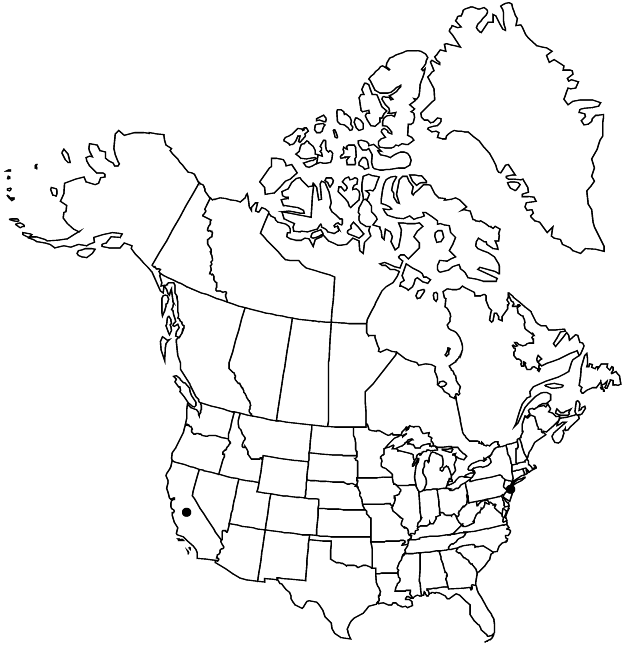Rumex palustris
Fl. Brit. 1: 394. 1800.
Plants annual or biennial, glabrous or very weakly short-papillose mostly in inflorescence and on leaf blades, with fusiform, vertical rootstock. Stems erect, normally branched in distal 2/3, occasionally almost near base, 10–60(–100) cm. Leaves: ocrea normally deciduous, rarely partially persistent at maturity; blade lanceolate or oblong-lanceolate, gradually narrowed at both ends, (10–)15–30(–35) × 1.5–6 cm, more than 4 times as long as wide, base narrowly to broadly cuneate, margins entire, flat or, rarely, weakly undulate, apex acute, rarely subobtuse. Inflorescences terminal, occupying distal 1/2 of stem, rarely more, reddish brown at maturity, usually lax, interrupted in proximal 1/2 or 2/3, broadly paniculate; branches spreading. Pedicels articulated near base or at least in proximal 1/3, filiform, 3–6 mm, articulation weakly evident. Flowers 15–25(–30) in rather dense whorls; inner tepals narrowly triangular, narrowly rhombic-triangular, or linguliform, (2.5–)3–3.5(–4) × 1.2–1.5(–2) mm (excluding teeth), normally ca. 2 times as long as wide, base truncate or broadly cuneate, margins prominently dentate, apex acute very rarely subacute, straight, teeth (1–)2–3, normally at each side of margins, subulate-filiform, bristlelike, straight, 1–2(–3) mm, usually as long as width of inner tepals; tubercles 3, equal or subequal, apex obtuse, smooth. Achenes light brown, 0.9–1.75 × 0.6–1 mm. 2n = 60.
Phenology: Flowering summer.
Habitat: Wet meadows, shores, marshes, ballast grounds, wet ruderal habitats
Elevation: 0 m
Distribution

Introduced; Calif., N.J., Europe.
Discussion
Rumex palustris was reported for the first time from North America by J. E. Dawson (1979) based on specimens misidentified as R. maritimus and R. pulcher, collected in 1877 and 1959, respectively. Rumex palustris is not known to be invasive, and these collections probably represent only occasional, chance introductions.
Selected References
None.